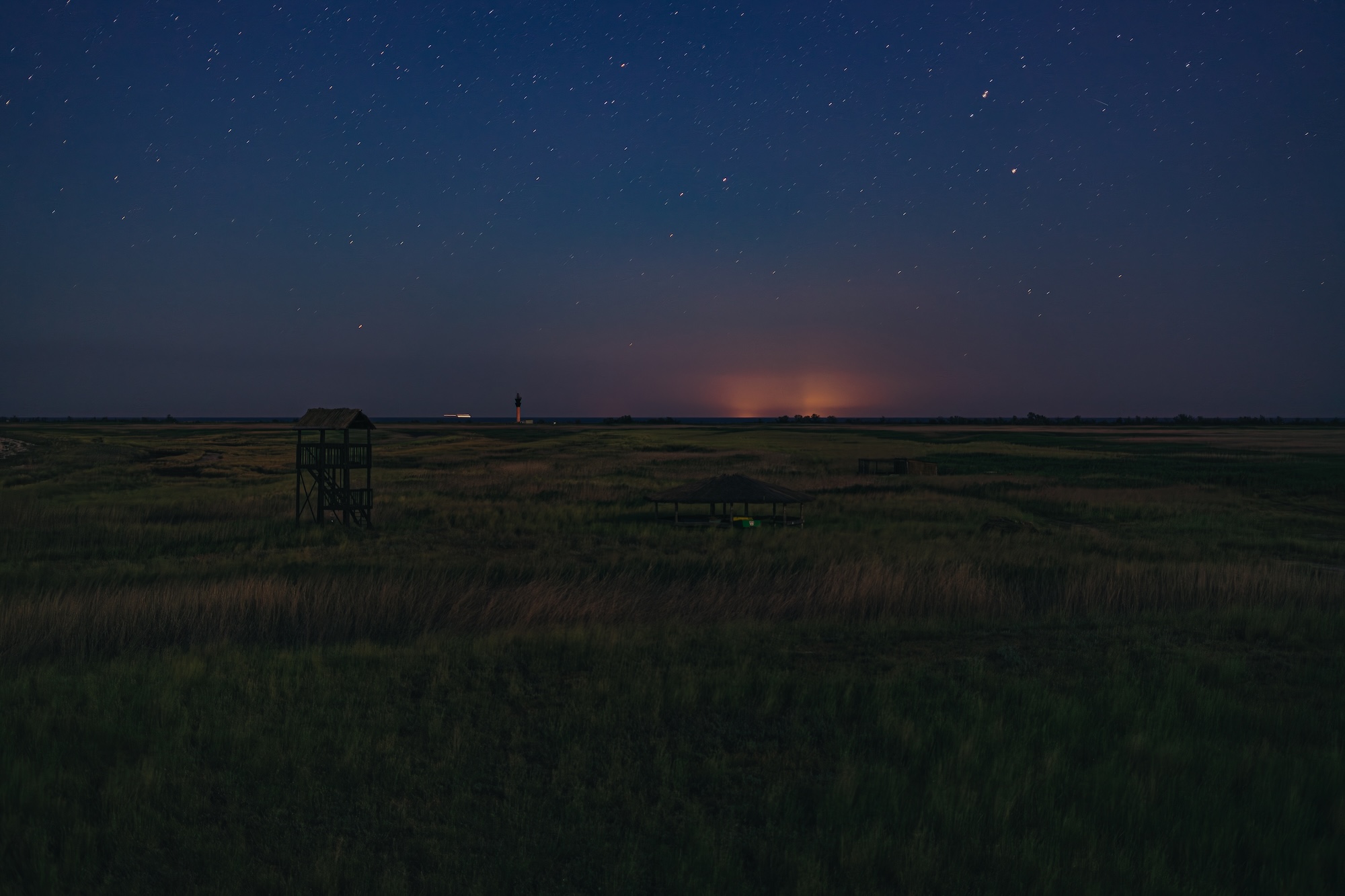03.05.2025
Day 1165 of the war. On duty: Samson V. O., Sokolov V. M. Temperature: +7 °C (45 °F). Cleaned the border. Cleaned the territory. Conducted research fishing. At 1:30 a.m., a powerful explosion occurred in the Tuzla area. At 3:00 a.m., there were eight explosions somewhere far away near the sea. At 5:30 a.m., about 20 flamingos flew near the border in the direction of Kamchatskyi Rozhok. At 6:30 p.m., two explosions were heard in the Tuzla area; smoke was visible after the first explosion. Repaired the pelican net.
02.06.2025
Day 1195 of the war. Cheban V. I. Temperature: +20 °C (68 °F). The wind is light and northerly, the weather is sunny. At 6:30 a.m., flamingos flew in from the direction of Raseika via Shahany towards Kamchatskyi Rozhok, about 100 birds. Took care of the animals. Cleaned the territory. At 10:00, Rusev, Samson and Veselova arrived at the border. Monitored the area from Lebedivka to here. Discovered an anti-ship mine near the former channel of Tuneva.
09.06.2025
Day 1202 of the war. On duty: Samson V. O., Sokolov V. M. Temperature: +2 °C (36 °F). Southeasterly wind. Took care of the animals. Cleaned the border. Cleaned the territory. Conducted research fishing. At 7:45 a.m., there was a powerful launch, Katranka area. At 8:13 a.m., there was a powerful launch, Katranka area. Mowed reeds and made an umbrella.
11.06.2025
Day 1204 of the war. On duty: Mykhailov G., Staroverov O. Took care of the animals. Inspected the border area. Cleaned the toilet. 00:00 Air raid alert. 00:12 Explosions in Vylkove (approx. 14); at the border, they feel like an earthquake. 00:22 All clear.
The logbook of the national park employees who take shifts at the border near the Shahany Lagoon in Odesa Oblast is filled with fine handwriting. Some write in a stern manner, some write just like they speak, and some write almost lyrically: “The sea is calm and beautiful.” The ecologists have named their outpost in the steppe “the border,” while the small house itself is called a bungalow. The goats. The reeds. The lagoon. The birds.
On June 3, Vasyl Cheban sat at the desk in the bungalow and searched for words to describe his shift. He was exhausted: in the morning, sappers arrived to remove a large anti-ship mine that washed up on the shore. From noon until evening, he had even more to do — yet another dead dolphin washed ashore. He wrote briefly: “Went to get the dolphin. Brought it to the border.” The lifeless body of the dolphin was quite large, so a donkey and a cart came in handy.
In the grass surrounding the bungalow, we see man-made sculptures: a groundhog, a pelican and a Scythian obelisk.
At night, the groundhog, the pelican and the Scythian obelisk look on as the Russian drones and missiles fly overhead and listen to the jackals “singing.”
Near the tall observation tower, not far from the bungalow, a stench becomes noticeable in the July air. The stairs leading up are blocked off so that dogs from the border or jackals from the steppe cannot get inside. On the upper platform lies a dolphin in a plastic bag, decomposing and slowly drying in the salty wind. Dolphins like this one have no other way to prove that they were killed.
There are no marks from fishing nets, and their fins and tails are intact, not cut off, as poachers tend to do. Dead dolphins have always washed up on the shore, but in the past three years, the nature of their deaths has changed.
Banderites from Budjak
“You know, there are three things that Americans are proud of: their flag, their anthem and their national parks. I fell in love with national parks a long time ago. But before Maidan, I didn’t care much for the anthem or the flag. After Maidan, I felt that they became mine, too. Ukraine has so much to offer. And now, someone wants to take it all away from us,” says Ivan Rusiev, a Ukrainian Bulgarian, as he drives us through the villages of Bessarabia to a unique area between the Shahany and Malyi Sasyk Lagoons and the Black Sea. The world’s first national park (Yellowstone in the U.S.) was created in 1872. One day, the then-president of the United States decided to designate the territories that were highly attractive to gold diggers as state property, thereby permanently securing their status as a special natural site. We are going to the last national park in southern Ukraine that has not been occupied by Russia.
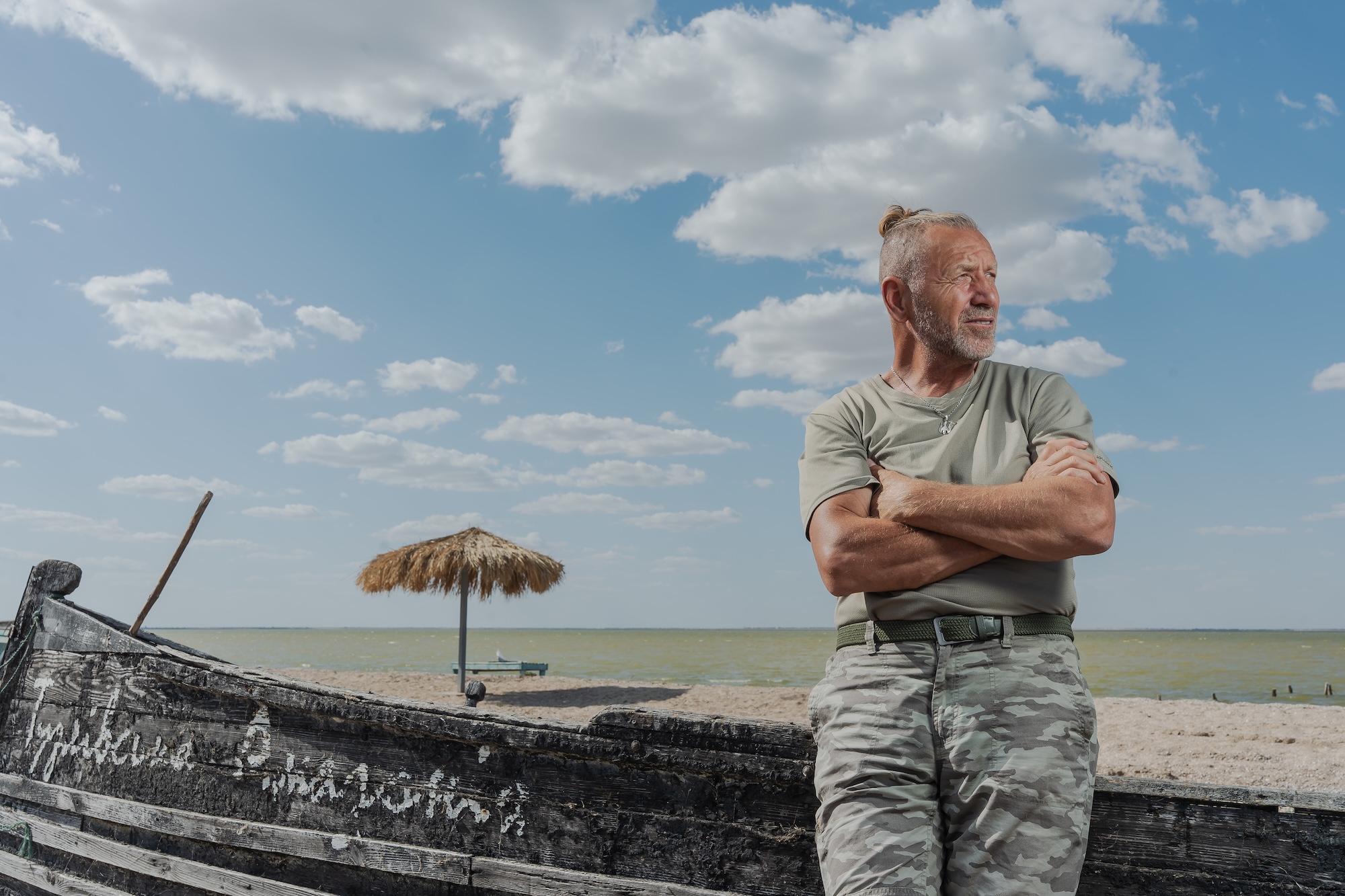
Over 27,000 hectares (69,000 acres) of land near the Black Sea. Thirteen lagoons — salt lakes separated from the sea by sandbars, fed by water either from small rivers or seawater through small channels. Here, in the lagoons, fish (such as mullet) fatten up before winter, and birds revel in the abundance of food. Salt has been extracted from these lagoons for centuries. Nowadays, they are very tempting to those who want to exploit them for ruthless industrial fishing. Poachers put up barriers at the channel entrances. These huge barriers get in the way of the mullet as the fish leave the lagoons to winter in the sea (and they have no choice but to go there). For local ecologists, the fiercest battle is still being waged against this fishing practice.
The car drives deeper and deeper into the sun-heated Budjak steppe situated between the mouths of the Danube and Dniester Rivers and the Black Sea. The air becomes saltier, and the wind freer.
Ivan Rusiev was born for the steppe and the sun. He’s tanned and muscular, with eyes the color of the sea, and his wrinkles only add to his charm rather than detract from it. He drives confidently and even a little arrogantly. The wind blows through the car; a pendant charm bounces on Ivan’s chest in rhythm with the road bumps. He later explains that it is a trident in the shape of a falcon. His father, a Bulgarian from a small village near Tatarbunary, was named Tryphon. And the Saint Tryphon, they say, is the only saint depicted with a falcon in his hand. Maybe that’s why Ivan has loved birds since childhood.
And then a bungalow appears on the horizon. Welcome to the former poachers’ lair, say the employees of the Tuzly Lagoons National Park. Fifteen years ago, this was an elite hunting ground. Old metal trailers once stood where the cozy bungalow now stands on the shore of the lagoon. High-ranking officials would come here to hunt, thinking that everything here was theirs for the taking.
Until President Yushchenko — who, as people liked to say at the time, loved everything American but loved everything Ukrainian even more — woke up one January morning and decided to issue his first decree of 2010, establishing the Tuzly Lagoons National Park. It also happened to be Stepan Bandera’s birthday. Perhaps that is why, in the current main office of the national park in the town of Tatarbunary, a large map of the lagoons is the first thing you see as you walk in the door, and above it the words: “There will come a time when one will say ‘Glory to Ukraine!’, and millions will respond with ‘Glory to the heroes!’”
Six years have passed since the team led by Rusiev and Iryna Vykhrystiuk, the current acting director of the national park, arrived there to make Yushchenko’s decree a reality. They are colleagues, experienced local conservationists, and Ivan is also a scientist.
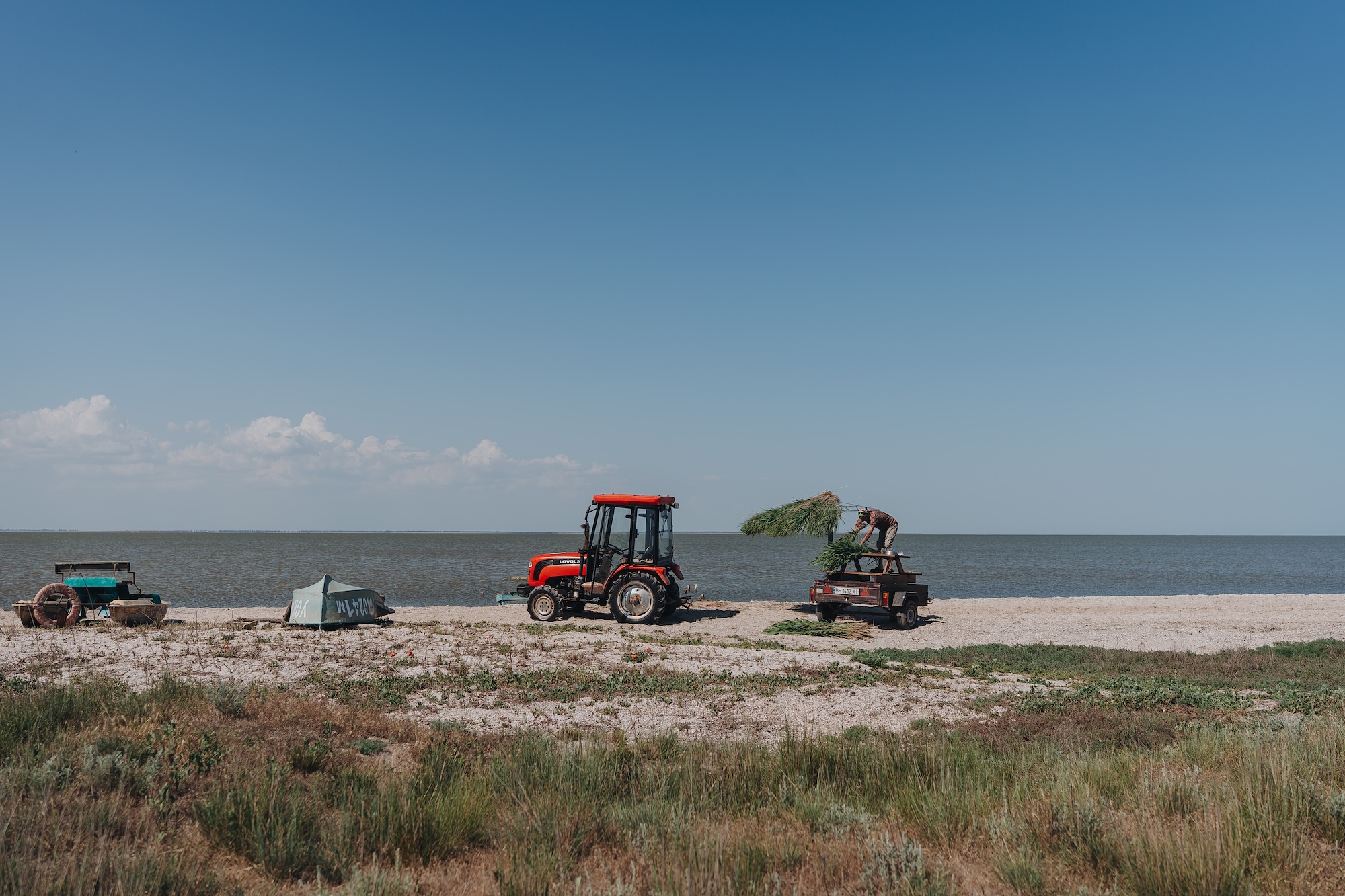
“We came to this park and started a war. We were told that they are in charge here, they know how it all works, they have protection — and who exactly are you? Well, we are representatives of the state, we are the national park. Don’t you understand? We quickly assembled some volunteers, and then the real fight began. The police, border guards, fishing and environmental inspectors — that was their protection. Once, when we were collecting nets with the inspectors, a poacher opened up a gas cylinder, held a lighter to it and said that he would blow everybody up. The police stood nearby and did nothing — only the volunteers were able to quickly knock him down and break his arm. After that, things were different. We began to clean up the area, removing the trailers and the rubbish. We decided to put up a barrier — a gate and a fence — for those who do not respect nature and state laws. Now we’re in a war with Russia, and there are all kinds of other challenges. But here, in this place, a certain harmony exists now between the people’s needs and the possibilities presented by nature,” says Ivan.
The Dying Sea
Ivan grew up near a reservoir that supplied his village of Dmytrivka (historically — and currently — called Delzhyler) with fresh water from the Danube. That’s why he was fascinated by stories of fresh waters — until life plunged him into the salty ones.
His schoolteacher knew a lot about elephants and giraffes in Africa, but nothing at all about the birds that lived on their reservoir. So Ivan had no choice but to become a biologist.
As a student, he went on expeditions and spent a lot of time “living like Mowgli in a colony of birds in the floodplains of the Dniester,” where he filmed them on 16-millimeter film with a Krasnogorsk-2 camera.
He witnessed humanity’s ability to thoughtlessly destroy nature right after he graduated, seeing the death of the Aral Sea with his own eyes. Ivan was invited to work at a closed institution that studied plague. The office was in Odesa — they monitored ships coming into port to ensure that rats were not carrying the disease. However, he was sent to study plague outbreaks in the Aral Sea region in Kazakhstan.
That was when Ivan Rusiev witnessed the biggest environmental disaster of that time. Fresh water was being diverted from the Amu Darya and Syr Darya, two large rivers in Central Asia, for cotton and corn cultivation, and the Aral Sea, into which they flowed, started dying. Sand and salt storms destroyed the city of Aralsk. The ships moored there fell over on their sides. The sea was full of sturgeon, but life in it was collapsing. It was the early 1980s. That was when, he says, “I got this bug”: in addition to conducting scientific research, he wanted to protect whatever he was researching.
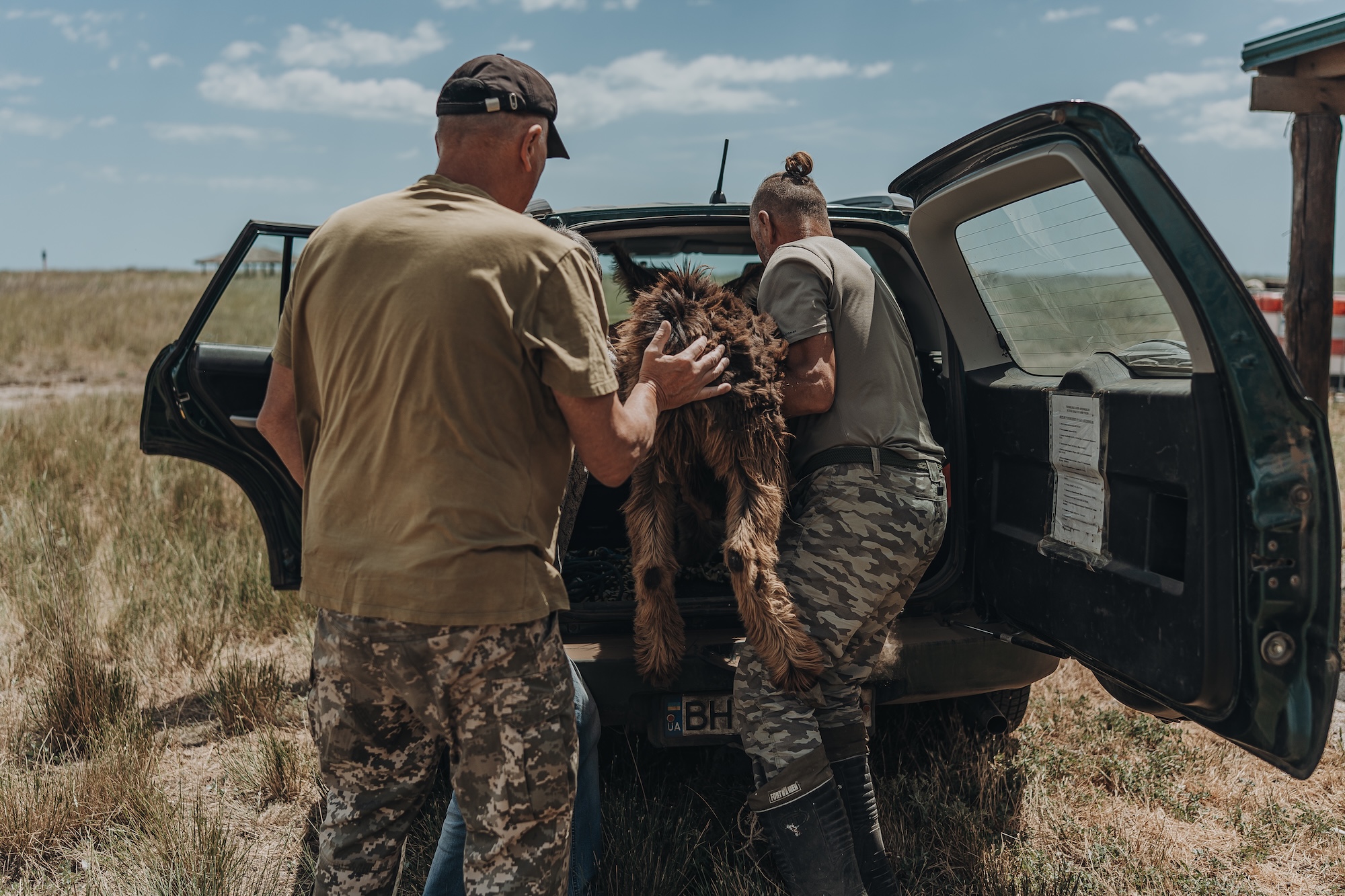
In Odesa Oblast, a project was being developed to transfer water from the Danube through the Dniester to the Dnieper. The idea was to transfer fresh water through all the saltwater lagoons, including those in Tuzla, and use it for irrigation. The Sasyk Lagoon (one of 13) fell victim to this plan.
“I wrote about this being a bad idea. Many people protested, and Iryna Vykhrystiuk led the movement for the protection of Sasyk. It was a saltwater lagoon, but they turned it into something more freshwater so that it could be used for irrigation. But Sasyk never became fully freshwater. As a result, nearly 60,000 hectares (about 148,000 acres) of fertile chernozem lands were destroyed. After 15 years, the project simply ended, leaving Bessarabia with infrastructure that no one needs anymore,” recalls Rusiev.
At that time, in the mid-1980s, Ivan and his colleagues began lobbying for the creation of national parks. They prepared justifications. They brought in their initiatives. They explained. It took 23 years to establish the first national park on this side (the Lower Dniester National Nature Park). Now there are 56 national parks in Ukraine. Some of them are occupied by Russians and have been looted, destroyed or turned into military training grounds.
When Ivan started creating national parks, he also dreamed of working in them.
“Soviet education was formally correct, but it wasn’t applicable in the real world. For example, in the Soviet Union, they created nature reserves, while Europe and America created national parks. What is the difference? A park is a place that protects nature, but allows people to use its resources. Nature reserves, on the other hand, are prohibitive. But even with all these prohibitions in place, select people would be allowed to get around them,” he explains. “To change this, our park is constantly working on environmental education. It will take years, but everything will change. On one condition — we have to be in the European Union.”
That’s why Ivan Rusiev, who has a doctorate in biology, went to the Maidan in Odesa in May 2014. He went there with his sons, without informing anyone at the plague research institute where he was still working at the time. When they found out, they responded with pressure. He wasn’t worried about his job, but he did worry about his research topic — he studied relict plague centers in the Odesa Catacombs and proved that plague epidemics in the city spread from there due to earthquakes that awakened the plague spores in these man-made caves.
In Odesa, he says, the Maidan was different from in Kyiv. Going there meant leaving behind a certain environment. At the Maidan in Odesa, Rusiev met people from the Sevastopol State Oceanarium, who worked with combat dolphins and moved to Odesa when Russia seized Crimea. That’s when Ivan became interested in studying dolphins in the wild. So he became the director of the Tuzly Lagoons National Park. But he is a researcher, not a manager, so he managed it for two years and then became head of the research department at the national park.
“To keep doing what I love,” he says.
Due to the full-scale war, the park currently lacks personnel to protect its territory of nearly 28,000 hectares (69,000 acres): a border of 150 kilometers on land and 44 kilometers of the shoreline (93 and 27 miles, respectively). Seven of their employees are fighting in the war; one has been killed in action, another has gone missing.
Ivan Rusiev, like everyone else, sometimes does a shift at the border near the Shahany Lagoon. He gets up at five, or even earlier, and climbs to the top of the tower. Then he walks his usual routes. He checks the camera traps. He backs up terabytes of information. In the evenings, he writes. The national park conducts its work publicly, sharing a lot on social media. The scientist has already published two books. He is currently working on a third one together with director Iryna Vykhrystiuk. The working title is “Nature — the Silent Victim of War.” This is how the park wants to preserve the evidence of ecocide it has collected for posterity.
Dolphins are killed. Flamingos are fearful
“I first saw dolphins in the open sea in 1967, when I was sent to the Zorka summer camp as a child. And this year, I haven’t seen a single one alive,” says Ivan.
With the start of the full-scale war, the Russians began bombing the park from the eastern side, near the Burnas Lagoon. Every evening, hundreds of shells fell into the lagoons, the sea, and all over the coast. Later, the military reported that 80% of them did not explode. It was only at the end of March or the beginning of April that national park employees were able to log the craters.
On March 27, 2022, the park employees were on duty at the border, as usual.
Ivan Plachkov was the first to spot the dead dolphin as he walked his usual route along the coast. At the time, he was an inspector at the national park, but then he left to defend Ukraine and went missing during the battle of Bakhmut.
The dolphin looked alive — it even had intact fins. It didn’t look like a victim of poachers at all.
“I was surprised because I had never seen dolphins washed up on the shore like that before. We immediately started thinking about what to do next and who to talk to. Iryna Mykhailivna called the ministry, but they didn’t pay much attention to the matter, saying, ‘Do what you think is best.’ So we did just that,” recalls Ivan.

First, they started looking for a place to store the carcass of a large dolphin, or even several, until experts could determine the cause of death.
“No one wanted to provide us with a freezer. When the prosecutor’s office opened the case, they found a local fisherman who volunteered to help, but we brought in dolphins that were already in various stages of decomposition. When the power went out, the man, who had fish stored in that freezer as well, took the dolphin to a landfill in the middle of the night and threw it out without informing us. I was in Lviv at a conference. They called and told me what had happened. ‘Go pick it up. Put it in a saltwater lagoon and leave it there.’ Some time later, the prosecutor’s office, the police, and a veterinarian arrived to collect samples.”
The ecologists at this national park were the only ones who could count the dead dolphins on the Black Sea coast. The military allowed them to monitor 6 kilometers (3.7 miles) of the coast, while the rest — a total of 24 kilometers (15 miles) — is either inaccessible or mined. From February to June 2022, when Ukrainians liberated Snake Island, ecologists found 52 dolphin carcasses. Before the full-scale war, they would discover only three per year. Ivan believes that 50,000 animals have been killed, but only a certain percentage end up washed ashore.
The primary reason is sonars, the hydroacoustic detectors used by military ships to detect submarines. They are deadly for dolphins, who are sensitive to acoustic waves. Then there are bombings and mine explosions. When the Ukrainian Armed Forces pushed the Russian ships first to Sevastopol and then to Novorossiysk, the sonar activity decreased, and fewer dead dolphins were washing up on the coast of the Tuzly Lagoons Park.
No matter how hard the park has worked to gather information about the dead dolphins, it has not yet received the expected response from the international community. Ivan Rusiev notes that everyone is slow to act, waiting and looking to see how Russia reacts.
“That’s why we decided to publish everything. We don’t know if there will be reparations or not. Ecocide is a case that is difficult to pursue internationally; there are very few examples of anyone winning international courts on ecocide and being punished. But history must be recorded. Someday, we may receive reparations for the dolphins, and we would be able to use that money for their protection,” Rusiev suggests.
It’s not just dolphins. Due to the fighting and oil tankers being damaged, a lot of oil products are spilled into the sea, killing fish and birds. When oil products spill, they immediately cover the birds’ feathers. As the birds clean themselves, they get poisoned — fuel oil is very toxic. Then the current carries their dead bodies to the Ukrainian coast.
“We found the first bird and thought, we will prove immediately that it’s fuel oil. But there was no action taken. The Ukrainian Scientific Center for Marine Ecology, which is responsible for such research, got scared off by the notion of bird flu and did not take on this case. The ministry advised us to contact the State Food and Consumer Service, which would investigate and then forward the case to the Marine Ecology Center. We found another bird on the sandbar, took it to the State Food and Consumer Service, and they burned it without investigating — they also got scared. Then we found a third one — no one wanted to take it, so we put it in the freezer. We are waiting for better times, until someone conducts an investigation and says: yes, this bird died because it ingested fuel oil from a Russian tanker,” sighs Ivan Rusiev.
On the windowsill near his desk in the bungalow sits a glass with two feathers. They’re flamingo feathers. From this window, you can see the Shahany Lagoon and the sky above it. Ten years ago, the ecologists who were on duty at the border were the first to see flamingos roam these skies.
They were flamingo scouts, Ivan says. They were looking for a place. He used to wonder why the salt lakes in Europe attracted flamingos, but those in Ukraine did not. In 2021, Türkiye’s largest salt lake, Tuz (“tuz” means “salt” in Turkic languages, hence many Ukrainian names such as Tuzla Island or Tuzly Lagoons), dried up. Locals were drawing water from the rivers that fed this lake, and food gradually disappeared from it. Tens of thousands of flamingos had to look for other places.
That year, the first 67 flamingos arrived at the Tuzly Lagoons, and the national park employees hoped that they would nest there the following spring. A year after that, the war began.
The flamingos are making desperate attempts to nest, changing locations. And, despite the war, they really want to return to the Ukrainian lagoons and nest here.
It’s like a rosy dream for them.
“How many are flying?”
In the backyard of the bungalow near the Shahany Lagoon, they keep the skulls and skeletons of the dolphins that died because of the war.
We take them out of an old cabinet and lay them out on the table. Nearby, Viacheslav Mykhailovych, who was on duty that day, repairs the fence and chases away the annoying goats. Rusiev says that people like him are the eyes and ears of the national park.
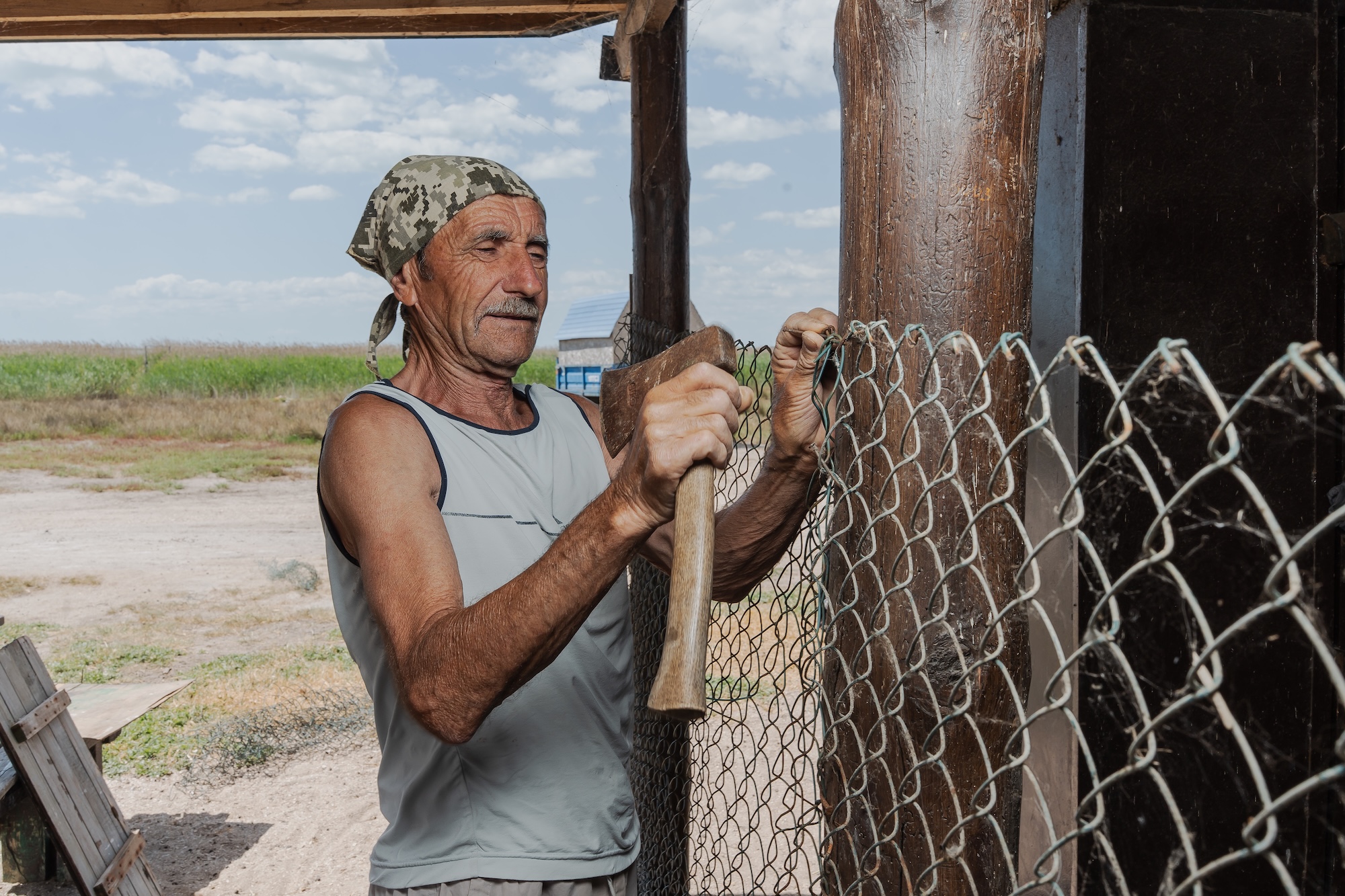
The following night, he showed us where he lives. We go out into the steppe as soon as the air raid siren sounds. In the national park, it is forbidden to spend the night in the bungalow during an air raid, because two outposts in other parks have already been attacked by drones — perhaps the Russians thought that those outposts housed soldiers. That’s why Mykhailovych and his colleagues are not allowed to wear clothes that resemble a military uniform.
There it is, his village of Zhovti Yary. “The one with the lights,” he points out a settlement beyond the lagoon. If you climb the tower by the bungalow on a quiet summer night and set your camera to long exposure, you can capture two red dots far out at sea, somewhere near Snake Island. Barely visible to the naked eye, two fires burn in the middle of the sea. They claim that it’s the “Boiko towers,” the gas drilling platforms captured by the Russians in 2014 and liberated by the Ukrainians in the fall of 2023, and they’re still burning.
“They’ve launched,” Mykhailovych says angrily, following the glow of air defense lights with his eyes. And, to distract us, he tells us about the packs of jackals that hunt here at night, about the baby goat they tore apart. He notes that jackals don’t usually approach humans — unlike Russian drones.
“Did they say how many are flying?” he asks.
In the morning, he’ll have to note it in the logbook.


